Carnial Sacral Therapy
Cranial Sacral Therapy (CST), is a subtle but effective bodywork that has gained popularity in recent times.
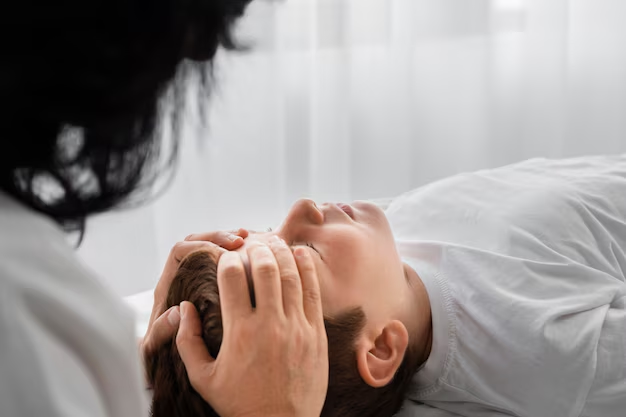
The present development of Cranial Sacral Therapy (CST) has its own remarkable history which includes even the end of the nineteenth century. While an applied therapy at present, its causes and history from its inception make us appreciate its present uses. The history of CST in terms of its development from the scope of osteopathy to its widespread acceptance is highlighted together with the key players in the story.
What are the historical origins of Cranial Sacral Therapy?
Cranial Sacral Therapy dates back its existence in the medical history to the end of the nineteenth century. It was instigated by Dr Andrew Still, a physician who is described to have established the field of osteopathy. Dr. Still’s interest in the self-healing properties of the body provided an ample background for CST.
In the early 1900’s, this was taken further by Dr. William Sutherland who was also an osteopath and who dwelt on the movements of the bones of the head. He theorized these bones somehow moved and that such movements were necessary limbs for the body functions. The beginning of Sutherland’s work was the initiating phase of CST. This was the evolution of the patients’ therapy ideas that would later dwelt on accommodating other developing practitioners in the future.
In what ways was Dr. William Sutherland involved with C.S.T.?
The father of cranial sacral therapy, Dr. William Sutherland is a notable figure. At the beginning of 20th century, he proposed that subtle movements of cranial bones could affect the central nervous system. His research revealed the existence of a form of rhythm that governs the movement of the plates and was therefore incorporated into the concepts of CST.
The work done by Sutherland which commenced in 1899 formed the basis for the practice of craniosacral therapy. He showed how the system affecting the bones and tissues of head utilizes the cerebrospinal fluid to assist proper functioning of the body. Up till now Sutherland’s work continues to be of great relevance to the development of the techniques and use of the therapy in contemporary integrative medicine.

How did Cranial Sacral Therapy evolve after its discovery?
CST evolved further into the hands of other health professionals, especially Dr. John Upledger in the 1970s. Upledger expanded upon Sutherland’s findings with scientific research and clinical applications, integrating CST into mainstream healthcare.
He founded the Upledger Institute in 1985 to provide formal education and research opportunities in CST. This allowed the spread of the therapy worldwide to be taken up by healthcare providers for conditions such as chronic pain, migraine, and stress, among others. Upledger’s work greatly affected the contemporary practice of CST in its ease and uniformity.
How does osteopathy relate to Craniosacral Therapy?
Cranial Sacral Therapy has its deep roots in osteopathy, which is a system of medicine developed in the 19th century by a doctor named Andrew Still. Osteopathy looks to the body’s self-healing potential and first pursue manual techniques in an effort to restore balance.
Dr. Sutherland, himself an osteopath, began expanding these concepts further, and eventually, the system that would become known as CST was developed. He took those osteopathic techniques to the cranial bones and elaborated another method that depended on the craniosacral system. The CST is a specialized branch from osteopathy today, as it uses similar hands-on approaches to further wellness and healing.
What role did the Upledger Institute play in promoting CST?
The Upledger Institute was established by Dr. John Upledger in 1985. The institute played a major role in expanding Cranial Sacral Therapy to the world. It developed systematic study programs and granted several certificates to health professionals coming from various parts of the world. The organization also supported research and enhanced the reputation of CST in alternative and traditional medicine.
The Upledger Institute stands at the frontiers of development related to CST through its provision of educational services, workshops, and clinical programs aimed at contributing to patient care. It was through its function in the dissemination of CST that the therapeutic modality spread to gain worldwide recognition and is widely practiced today.
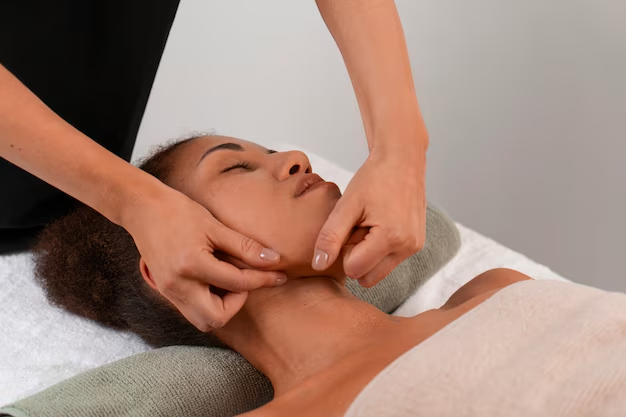
How does modern health care receive Cranial Sacral Therapy?
Cranial Sacral Therapy began with much skepticism but has since been adopted into modern health care as a complementary therapy. Presently, CST has become widely accepted and used in treating chronic pain, migraine, and trauma.
Being a non-invasive procedure, CST finds favor with patients who want gentle, holistic care. Many integrative medicine practices incorporate CST in their therapies along with chiropractic and massage therapy for an overall healing approach. This wider acceptance points to a growing interest in alternative therapies.
How does Cranial Sacral Therapy fit into holistic health practices?
Cranial Sacral Therapy fits into the use of holistic health practices by emphasizing the treatment of the whole person: mind, body, and spirit. CST aims at the balancing of the craniosacral system, dealing not only with physical problems but also with those of an emotional and psychological nature.
It thus provides a popular application within holistic and integrative medicine, besides acupuncture, chiropractic practices, and massage therapy. Its non-invasive, gentle approach supports other therapies aimed at helping overall wellness and self-healing. CST really follows the principles of the holistic philosophy in restoring balance and supporting natural processes in the body.
In Conclusion
Cranial Sacral Therapy has a rich history from osteopathic roots to its global practice today. Pioneers like Dr. Sutherland and Dr. Upledger developed this modality into a superb, suggested, and respected therapy for traumatic physical and emotional conditions of healing. As CST continues to grow in popularity within holistic health, the emphasis on balance and gentle healing will resonate with those seeking comprehensive wellness solutions.
Carnial Sacral Therapy
Cranial Sacral Therapy (CST), is a subtle but effective bodywork that has gained popularity in recent times.

Cranial Sacral Therapy is a gentle and non-invasive healing modality meant to improve the activities of the central nervous system. It works with the craniosacral system which includes the brain and spinal cord surrounding fluids and membrane. The practitioners use gentle touch to remove restrictions in these areas.
What’s The Basis OF The Craniosacral System?
The craniosacral system is based on the rhythmic pulsation of cerebrospinal fluid within the skull and spine. This system influences the central nervous system and overall bodily health through gentle manipulation.
Cranial sacral therapy cannot be fully comprehended unless the craniosacral system is understood. It comprises the Meninges, three covers that surround the spinal cord and brain.
Cerebrospinal fluid is a clear, colorless liquid that circulates around the brain and spinal cord. It protects and removes waste products. Skull, spine, pelvis bones are where our central nervous systems are located and protected.
Maintenance of an appropriate environment for optimal functioning of CNS depends on a healthy craniosacral system. It controls IntraCranial Pressure (ICP), shields the brain and spinal cord from physical trauma, and helps the flow of cerebrospinal fluid to flow.
What’s The Process of Cranial Sacral Therapy?
Cranial sacral therapy involves gentle, non-invasive touch to the skull, spine, and sacrum. The therapist assesses and adjusts the craniosacral rhythm to release tension, enhance fluid flow, and promote healing.
The practitioner starts by taking a comprehensive medical history and discussing the client’s immediate problems. Usually, the client lies down on a massage table fully clothed, facing up.
Practitioners use light, non-invasive gentle touches to examine craniosacral rhythms and locate regions where there is constriction or tightness. Normally no more than 5 grams of force are employed during this method.
It involves subtle manipulations that can help release restrictions within the craniosacral system. This may include mobilizing bones such as those found in the skull, spine, or pelvis and working with soft tissues such as fascia, among others.
Further discussions may be held after every therapeutic session regarding findings and recommendations for future care or changes in lifestyle.
What Are The Merits of Craniosacral Therapy?
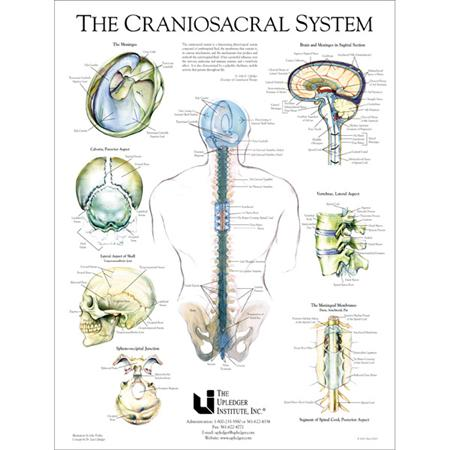
Craniosacral therapy can relieve stress, reduce pain, improve circulation, enhance nervous system function, and support overall well-being. It is gentle, non-invasive, and may aid in healing various physical and emotional issues.
Cranial sacral therapy can solve a wide range of physical and emotional problems. Several patients suffering from chronic pain disorders such as migraines, neck and back pains, or temporomandibular joint (TMJ) disorders have embraced cranial sacral therapy.
It is believed that its gentle nature induces calmness, which may lead to a reduction in stress levels and anxiety. Cranial sacral therapy can help improve sleep quality by promoting relaxation and addressing nervous system imbalances.
Cranial sacral therapists are of the opinion that the immune system can be strengthened by optimizing the central nervous system. People suffering from disorders like autism, attention deficit hyperactivity disorder (ADHD), and post-concussion syndrome may benefit from this treatment.
After undergoing cranial sacral therapy sessions, many patients admit to experiencing positive changes in their moods and emotional balance. Pregnant women might find cranial sacral helpful during discomfort or for general well-being after birth.
What Are The Safety Considerations in Cranial Sacral Therapy?
Craniosacral therapy is generally safe, but it should be avoided or approached with caution in cases of severe head trauma, recent surgeries, or certain medical conditions. Always consult a healthcare professional beforehand.
When a qualified practitioner carries out cranial sacral therapy, it is generally considered safe for most patients on receipt of the same. However, there are some situations where caution is advised:
In cases of acute trauma, it’s important to seek medical attention before considering cranial sacral therapy. People with diseases that increase intracranial pressure, such as brain tumors or acute aneurysms, should ask their healthcare provider about cranial sacral therapy before trying it.
There are times when deep relaxation produced by this therapy may bring up emotional issues. Practitioners must be aware of this possibility and provide appropriate support.
How To Choose a Good Practitioner?
To choose a good craniosacral therapist, look for certified practitioners with relevant experience, positive reviews, and good communication skills. Ensure they are licensed and consult your healthcare provider for recommendations.
When selecting a cranial sacral therapy practitioner, it is important to choose someone who is competent. The practitioner must have proper training and certification offered by recognized organizations such as the Upledger Institute or the Biodynamic Craniosacral Therapy Association.
They must have experience in treating different health conditions or concerns. The practitioner should be ready to openly communicate about the therapy and work together with other medical care providers.
The therapist must have a relaxed and professional bearing that can make one feel at ease during the session.
Is Cranial Sacral Therapy like Reiki?
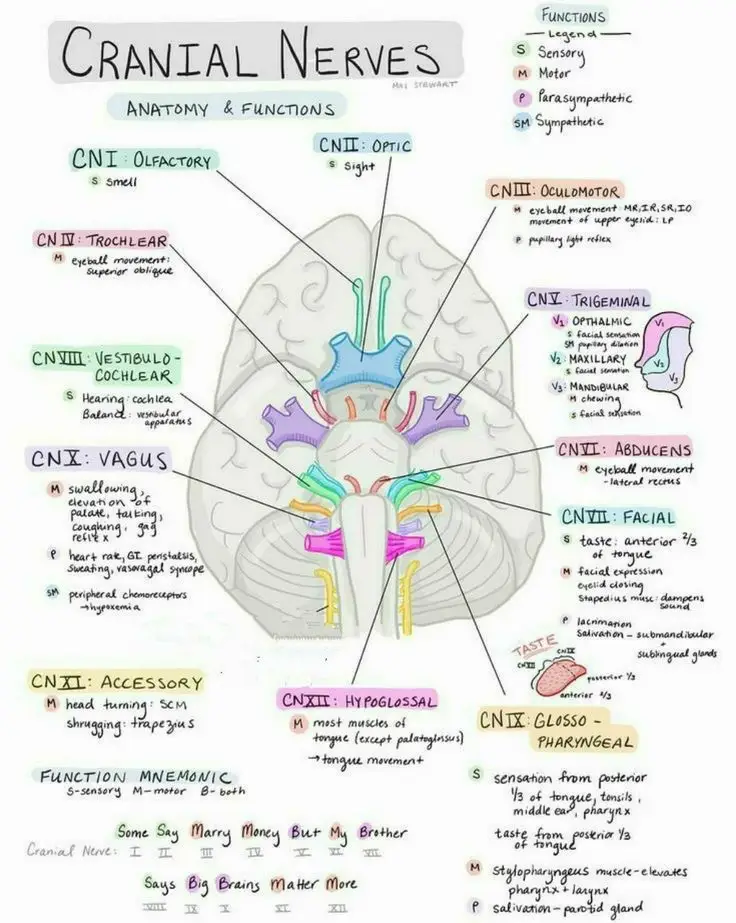
Craniosacral therapy and Reiki are different practices. Craniosacral therapy focuses on physical manipulation of the craniosacral system, while Reiki involves energy healing through non-touch techniques to balance the body’s energy.
Cranial sacral therapy (CST) and Reiki both aim at healing but are differently related. CST is a type of bodywork that uses light manipulation of the skull, spine and pelvis to release stress and improve cerebrospinal fluid flow. It mainly concerns anatomy and physical corrections.
However, Reiki involves energy healers who channel universal life energy for balance restoration purposes. While CST tends to focus more on physical factors, reiki concentrates much on energetic aspects.
What are the side effects of cranial sacral massage?
Side effects of craniosacral therapy may include mild dizziness, headaches, or temporary fatigue. These effects are usually brief and resolve quickly. If symptoms persist, consult with your therapist or healthcare provider.
Cranial sacral therapy (CST) is typically regarded as safe and gentle and has only a few side effects. A few people may feel discomfort for a short period or develop minor effects such as headaches, dizziness, fatigue, and emotional release during recuperation. These symptoms should not last long and are normal body responses to healing processes.
In some cases, however, there may be more serious reactions like intense pain or fainting, particularly if an individual has certain health problems. Therefore, it is advisable to consult with a licensed practitioner.
Conclusion
Cranial sacral therapy involves gentle non-invasive touches aimed at promoting good health by enhancing the efficiency of the craniosacral system. Despite some conflicting scientific evidence many people have claimed to benefit from this mode of treatment. Nevertheless, like any other alternative therapy, individuals must approach cranial sacral therapy with realistic outlooks.
Reference
Carnial Sacral Therapy
Cranial Sacral Therapy (CST), is a subtle but effective bodywork that has gained popularity in recent times.
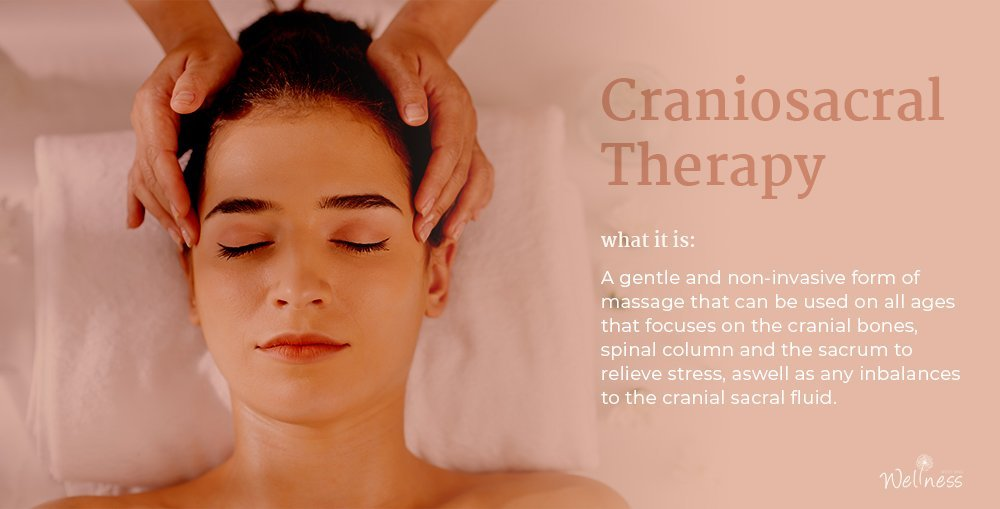
Cranial Sacral Therapy (CST), is a subtle but effective bodywork that has gained popularity in recent times. This holistic approach to healing focuses on the craniosacral system which includes membranes and fluid enveloping the brain and spinal cord. The aim of manipulating this system is to ensure general well-being.
Understanding Cranial Sacral Therapy: A Full Review
Craniosacral therapy involves a soft, hands-on procedure to manipulate the craniosacral system, which is made up of the protective membranes and fluids of the brain and spinal cord. The originators, however, developed CST as a gentle, light-touch method to support the natural self-correcting capabilities of the body in ways quite different from those of conventional therapies.
Core Elements of CST
Light Touch: In touch, a practitioner applies light pressure on a place to begin a release in this system.
- Self-Healing Focus: CST enhances the body’s self-healing capability to further total health. Whole-Body Integration: Imbalances in the body, emotions, and energy are dealt with using CST.
- Non-invasive Approach: The gentle techniques make it quite suitable for all age groups, from infants to elderly people.
- Holistic in Nature: The nature of CST itself is quite different from most traditional medical treatments.
The Historical Roots and Development of Cranial Sacral Therapy
The roots of Cranial Sacral Therapy can be traced back to the early 20th century when osteopathic physician William Sutherland made a groundbreaking discovery. Sutherland observed that the cranial bones were designed for slight movement, contradicting the widely held notion that they were fused and immobile. This observation led him to develop cranial osteopathy, which was later expanded upon to form modern-day Cranial Sacral Therapy.
Dr. John Upledger, an osteopathic physician and researcher who built on Sutherland’s work, improved it during the 1970s. Through his research, he gathered scientific proof of the existence of the craniosacral system with its rhythmic motion. These findings laid down the foundation for what we now refer to as Cranial Sacral Therapy.
This table provides a structured overview of the techniques commonly used in Cranial Sacral Therapy.
Cranial Sacral Therapy Principles And Techniques
A few key principles form the foundation of Cranial Sacral Therapy:
- The ability of the body to heal itself
- Vitality preservation via craniosacral rhythm
- All systems in the body are linked together
- The power of gentle touch facilitates healing.
In a typical CST session, a practitioner uses light touch– usually no more than the pressure of a nickel coin – to evaluate restrictions present within the craniosacral system while offering therapy. Such treatments can be done on various parts including head, spine, sacrum, etc.

Fundamental Concepts and Techniques of Craniosacral Therapy
CST is founded on the principle that the craniosacral system is one of the most important systems in the body. Thus, it points to some key principles and techniques for conducting the therapy, such as:
- The craniosacral rhythm: Practitioners palpate the small movements of the cerebrospinal fluid to detect restrictions or imbalances.
- Light Touch Light: Gentle touch greater than nickel weight is continuously used while manipulating the cranial bones and tissues.
- Unwinding of Tensions: CST aims to release stored tension in the body’s connective tissues, thereby improving function and relieving pain.
- Whole-Body Healing: CST treats the body as an integrated system, with treatment targeted at general health improvement, facilitating the body’s self-healing functions.
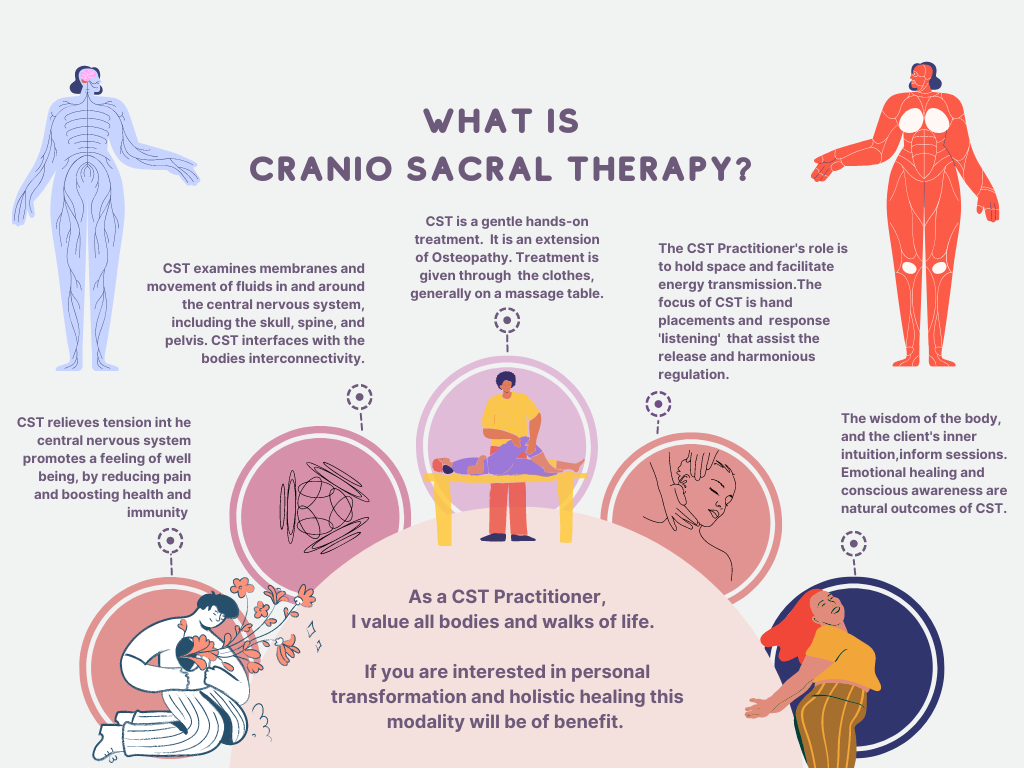
Exploring the Healing Benefits of Cranial Sacral Therapy
Cranial Sacral Therapy, or CST, covers different dimensions of healing benefits: physical, emotional, and mental. Improvement from practitioners and patients alike:
- Physical Relief: The technique releases tension in the craniosacral system, relieving chronic pain, migraines, and neck and back problems.
- Emotional Balance: The light contact enables the release of trauma, allowing the individual to be in a place of calm that reduces anxiety and depression.
- Quality Sleep: Most patients reported improved sleeping patterns due to the improvement in the functioning of the nervous system facilitated by CST.
- Improved Concentration Ability: CST works in facilitating focus, concentration ability, and diminishing mental fogginess.
- Better Wellbeing: Promoting self-healing in this body, physical and emotional health are enhanced by the CST.
Who Can Benefit from Cranial Sacral Therapy?
CST is effective for all types of individuals from varied walks of life and can cure them from physical, emotional, and mental health issues. The category of patients it can cure includes:
- People Suffering from Chronic Pain: CST helps in alleviating pain related to migraines, lower back pain, and joint pain.
- Those with Stress and Anxiety: Gentle manipulations encourage relaxation and the release of bottled-up emotions, which help to decrease anxiety and tension.
- Children and Infants: Because of the gentleness of this modality, CST is non-invasive for newborns suffering from colic, sleep issues, or developmental delays.
- Individuals with Trauma: CST helps clear patterns of emotional or physical traumas which may have been stored in the body.
- Elderly: The gentleness supports mobility while reducing pain and promoting relaxation amongst seniors.
CST addresses an array of needs through its approach to holistic healing.
Scientific Insights: What Does the Research Say About Cranial Sacral Therapy?
Research into CST is still in its infancy, though various studies highlight its uses. Although more trials of a more robust nature need to be done, what can be determined from the available data is:
- Pain: There is evidence that it may reduce chronic pain disorders. Specifically, migraines and lower back pains.
- Reduce Stress: There is evidence showing a reduction of cortisol levels following CST; hence, the reduction of stress and anxiety.
- Improved mobility: Some studies show that CST can offer a better range of motion and flexibility in older patients.
- Neurological Support: Some early beginnings are promising in the management of neurological disorders, like multiple sclerosis and autism.
Though more studies are needed, it has a growing interest in alternative therapy as the procedure of CST is non-invasive and its benefits have been documented.
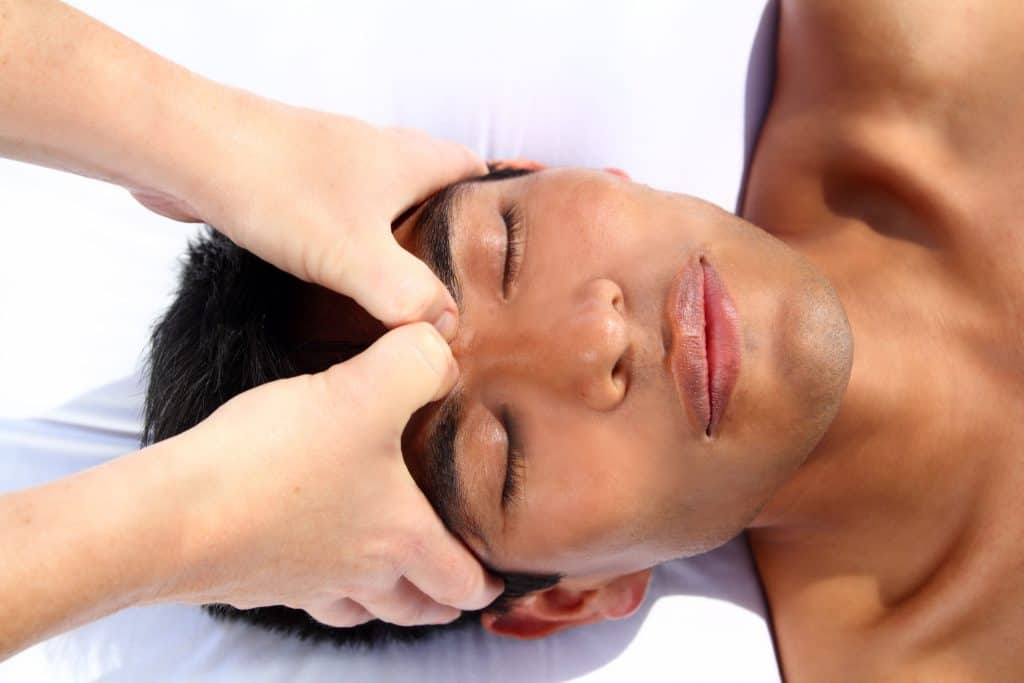
Step-by-Step Guide: What Happens during a Cranial Sacral Therapy
The session of cranial sacral therapy lasts about 45-60 minutes. This is how a session goes:
- First Evaluation: The practitioner will carry out a thorough history taking and discussion of main complaints of the patient as well as the treatment objectives.
- Preparation: Although the patient remains fully clothed, he or she will be lying on a table. Alternatively, the position of the patient may be over the arms, forehead or back depending on the comfort.
- Treatment: The therapist will put the hands on specific points on the body and try to assess the mobility of the craniosacral system among others. Patients frequently report feelings of warmth, tingling sensations, or even deep relaxation.
- Question and Answers: After the session, the caregiver may talk to the patient and approve some self-care measures.
Most of the persons visiting CST sitting takers feel improved afterward. It is typical for one to feel worn out or even experience mild soreness as they tend to learn how to accommodate their bodies during the period.
Integrating Cranial Sacral Therapy with Conventional and Complementary Therapies
One should note that most Cranial Sacral Therapy is well accompanied by other healing methods. These are some typical mixtures:
- Massage Therapy: Deeper structural imbalances can be addressed by CST, thereby complementing massage effects.
- Chiropractic Care: CST techniques can supplement spinal manipulations when applied together with chiropractic care.
- Physical Therapy: Chronic pain and movement restrictions can both be handled within a standard physical therapy using CST alongside traditional physical therapy practices.
- Psychotherapy: Emotional release facilitation resulting from relaxation caused by CST is compatible with talk therapy.
- Acupuncture: Body energy systems balancing is equally aimed at by both CST and acupuncture thus they work best while used together simultaneously.
- Yoga and Meditation: This practice’s focus on mindfulness and body awareness is consistent with that of CST.
With the aim of a more holistic approach to health and healing, practitioners usually combine CST with other modalities.
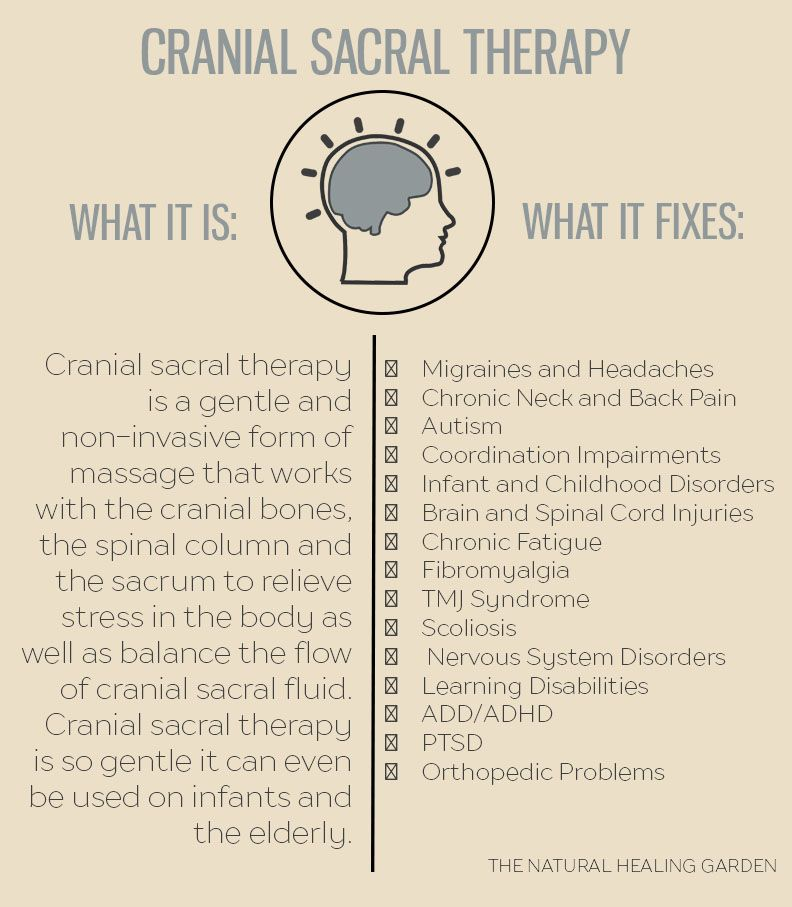
How to Find a Qualified Cranial Sacral Therapist?
Your attention to finding a qualified Cranial Sacral Therapist is needed. First, ensure they have certifications from recognized institutions like the Upledger Institute and the Biodynamic Craniosacral Therapy Association.
What you will want to see is the experience; hence, ask about years of practice and what conditions they specialize in. Check the success rate by looking for reviews or testimonials from past clients. This being a treatment that uses gentle, hands-on techniques, it is really necessary that the therapist makes the setting comfortable and safe for the individual.
For instance, one should not fiddle over requesting an initial consultation, as this way it will make a difference in the kind of approach one needs. A good therapist will also put efforts into clear communication with regard to what one can expect, explaining in a manner that the client can understand and setting realistic expectations.
Finally, trust your instincts-find a therapist you are at ease with because the therapeutic relationship is going to be the most important part of your treatment. This is going to ensure the process that you get provided with safe and effective care by a competent professional in cranial sacral therapy.
Potential Side Effects and Precautions of Cranial Sacral Therapy
Cranial Sacral Therapy is generally a non-invasive and harmless therapy, one can be quite aware of its risks and side effects. A few clients might experience slight discomfort or soreness after having a session since the body adjusts itself to the gentle manipulation affecting the cranial bones and soft tissues.
This is contraindicated for patients with fresh head trauma, aneurysms, severe osteoporosis, and other conditions that may get exacerbated by the treatment. Of course, it is prudent to consult with a physician before commencing CST, especially if one has chronic conditions or medical concerns. CST is definitely useful to many people, but again, with proper precautions and with the proper therapist, the risks can be minimal and treatment safely made.
Understanding the Financial Investment in Cranial Sacral Therapy
CST is both a time and financial investment. Costs per session typically range between $70 and $150, depending on location and the therapist’s experience. Since CST usually deals with conditions that are ongoing in nature, it usually takes multiple sessions to have really long-lasting effects; this does add up over time.
Insurance does not always cover CST, so this is best checked with your provider. Although this might be a lot up-front, many find pain relief, improvement in mobility, and reduced stress to be long-term benefits well worth their investment in health and wellbeing.
How to Become a Practitioner of Cranial Sacral Therapy?
To become a practitioner of CST, one must undergo specific training from recognized accredited institutions such as the Upledger Institute. Both anatomy, physiology, and hands-on techniques are some of the covered courses.
Most of the courses provide various levels of certification whereby a practitioner could increase his competence in a progressive way. This is followed by professional certification through a recognized body like the Biodynamic Craniosacral Therapy Association.
Such skills are only developed through hands-on experience, such as through internships or mentorship. On the other hand, most CST practitioners have a background in general health, massage therapy, or bodywork and, therefore, can have something to stand on regarding how to apply the techniques learned in CST.
How to Get Started with Cranial Sacral Therapy?
Any treatment first requires research to find a qualified therapist certified by reputable institutions such as the Upledger Institute in Cranial Sacral Therapy. An introductory appointment may be scheduled wherein you outline your health issues your expectations from the treatment, and the successful results one may get from treating their condition with CST.
During the first session, the patient is usually exposed to slight pressure as the therapist examines the cranial rhythm, which the therapist would work to normalize. Be open to more than one session; sometimes the treatment even if complete still needs some stabilization to last over time. Always check with the doctor if this type of treatment is acceptable with his or her recommendations.
Conclusion
Cranial Sacral Therapy (CST) is a safe form of therapy that seeks improvement of a client’s health in the physical and psychological realms. While members of the health profession continue to engage in the scientific debate, a large number of the population attest that their issues involving the cervical spine and related symptoms are solved through CST. With the practice of Cranial Sacral Therapy, which is part of the Wellness path, as with all other supplementary therapies, it is necessary to be guided by healthcare specialists and undergo treatment with professionals.
References
Carnial Sacral Therapy
Cranial Sacral Therapy (CST), is a subtle but effective bodywork that has gained popularity in recent times.

Cranial sacral therapy (CST) is a light touch hands-on method of enhancing the function of the craniosacral system, which includes the membranes and cerebrospinal fluid that surround and protect the brain and spinal cord. It claims to aid overall health by improving natural healing processes in the body and is commonly used to relieve pain, stress and other health concerns.
Who is craniosacral therapy suitable for?
Craniosacral therapy is suitable for individuals seeking relief from chronic pain, stress, and tension. It is often recommended for conditions like migraines, fibromyalgia, and anxiety. This gentle therapy can benefit people of all ages, including children and seniors, by promoting relaxation and enhancing overall well-being.
Craniosacral therapy is especially well-suited for those experiencing a great deal of pain, stress, and tension. It is often recommended for conditions like migraines, fibromyalgia, and anxiety. People from children to the elderly who are looking to relax and improve their general health will also find this gentle treatment suitable. It, therefore, greatly attracts people who are looking for alternative, non-invasive solutions to achieve perfect health and wellness since it permits self-healing in the body. It also helps athletes who are injured and even those with sleep disorders, making it a holistic method for physical and mental rehabilitation.
What conditions can craniosacral therapy help with?
Craniosacral therapy can help with a variety of conditions, including headaches, migraines, neck pain, stress-related disorders, and chronic fatigue. It may also assist in managing symptoms of anxiety, depression, and post-traumatic stress disorder (PTSD). This therapy supports overall health and well-being.
Craniosacral therapy can assist in the following conditions: headache relief, migraine pain management, neck aches, stress-related disorders, and chronic fatigue. It may also help in alleviating some of the symptoms associated with anxiety, depression, and PTSD. This therapy enables both mental and physical health. Craniosacral therapy manages to release tension in the body gently, thereby allowing the improvement of natural healing processes of the body and improving physical and emotional resilience. This technique is also applied in conditions such as fibromyalgia, autism spectrum disorders, and even digestive issues, which proves it to be a versatile therapy against many health challenges.

Are there any exclusions for craniosacral therapy?
Craniosacral therapy is generally safe, but it may not be suitable for individuals with recent head injuries, acute bone fractures, or severe bleeding disorders. Pregnant women should consult their healthcare provider before starting treatment. Always consult a qualified therapist for personalized advice and assessment.
Craniosacral therapy is generally safe, but it can be contraindicated for a person who has had a recent head injury, an acute bone fracture, or suffers from severe bleeding disorders. Pregnant women should consult their healthcare provider before starting treatment. Always consult a qualified therapist for personalized advice and assessment. Other exclusions might include severe osteoporosis or a previous history of aneurysms where pressure changes might present risks. A full assessment is always important for everyone, and even more so if one has a complicated medical history or has ongoing treatments that they are required to undergo.
How does craniosacral therapy promote relaxation?
Craniosacral therapy promotes relaxation by using gentle touch to release tension in the body. It helps calm the nervous system, reducing stress and anxiety. The therapy enhances the body’s natural healing processes, leading to a sense of deep relaxation and improved overall well-being.
In craniosacral therapy, the relaxation is so gentle that it releases tension in the body. Relaxation of the nervous system relieves a person from stress and anxiety. It enhances the natural healing process of the body and bestows a person a relaxed state felt both deeply and wholly, thereby enhancing general well-being. The therapist applies light pressure to detect restrictions in the craniosacral system and facilitate the flow of cerebrospinal fluid. This gentle technique supports the body’s ability to self-correct and promotes a parasympathetic state essential in relaxation and healing. Often, patients will say that after sessions, they feel deeply tranquil.
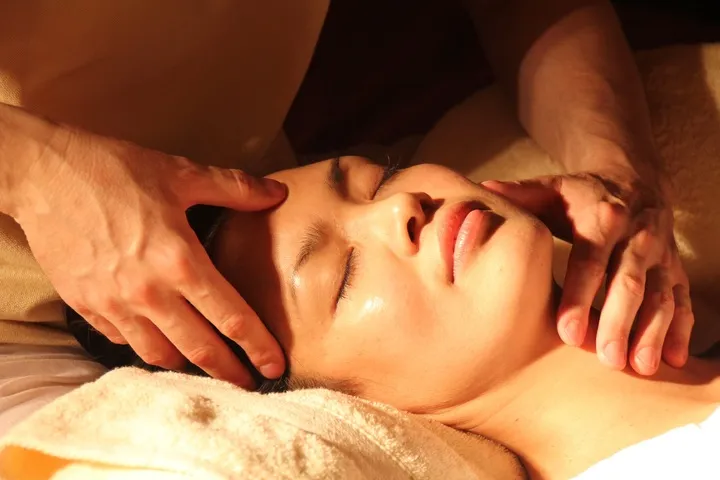
Can craniosacral therapy be used alongside other treatments?
Craniosacral therapy can be used alongside other treatments as a complementary approach. It works well with conventional medicine, chiropractic care, massage, and acupuncture. This therapy enhances the effectiveness of other treatments by promoting relaxation and supporting the body’s natural healing processes.
Craniosacral therapy can be administered as an adjunct to other forms of treatment. It has the ability to work very well with conventional medicine, chiropractic care, massage, and acupuncture. This therapy enhances other treatments by relaxing and allowing the body to begin the healing process. Its gentleness can integrate very easily with these other modalities, hence contributing to the achievement of holistic health among patients. The combination of craniosacral therapy with other therapies may enhance healing, reduce the symptoms, and improve the quality of life in general without hampering the ongoing treatment.
Is craniosacral therapy safe for children?
Craniosacral therapy is safe for children and can be beneficial for various issues such as colic, sleep disturbances, and developmental delays. The gentle nature of the therapy makes it suitable for infants and children, supporting their physical and emotional development in a non-invasive manner.
Craniosacral therapy is safe for children and can aid in a host of issues, from colic to sleep problems and developmental issues. The therapy is so gentle that it can be applied to infants and children to promote their physical and emotional development in a non-invasive way. It helps release physical tension patterns that can influence Children’s Growth and Behaviour. This therapy is especially useful for newborn babies and Toddlers who are facing birth trauma-related and feeding-related issues. Its gentle approach helps the child improve his sense of calm and security, hence health and better development.
What should I expect during a craniosacral therapy session?
During a craniosacral therapy session, you can expect to lie fully clothed on a treatment table. The therapist uses light touch to assess and release tension in the craniosacral system. Sessions are typically relaxing, lasting 45 to 60 minutes, and may result in a sense of deep relaxation.
You will most likely lie on your back on a treatment table, fully clothed, for a craniosacral therapy session. A light touch is used by the therapist to evaluate and release tension in the craniosacral system. Sessions normally feel very relaxing and could bring one deep relaxation at the end, which can last for 45 to 60 minutes. The therapist will gently palpate the areas around the head, neck, and back to locate any restrictions to the flow of cerebrospinal fluid. As the fluid begins to flow, patients can often become very relaxed and sometimes even enter a meditative state. People can have different experiences, but some may feel warmth, tingling, or pulsations.
Conclusion
To summarize, craniosacral therapy can help with anxiety, and there are three different ways it does this. Before you start getting CST done, though, talk to a doctor first so they can tell you if it is right for you; they might not recommend it in certain cases. Always ask an expert for advice on how best to look after yourself!
References
Carnial Sacral Therapy
Cranial Sacral Therapy (CST), is a subtle but effective bodywork that has gained popularity in recent times.

Nowadays, alternative medicine has begun to take notice of craniosacral therapy (CST). It is a delicate method that believes in releasing tensions from the deepest parts of the body so as to alleviate pain and dysfunction. According to its advocates, it can be used for many different conditions such as migraines or anxiety.
However, this popularity increase also brings about questions on how effective this treatment really is? This article will provide an overview on what CST is about, look into some evidence available and answer common queries which may help one decide if they should give a try or not.
What is craniosacral therapy, and how does it work?
Craniosacral therapy is a gentle, hands-on treatment that targets the craniosacral system, which includes the membranes and cerebrospinal fluid around the brain and spinal cord. Practitioners believe this therapy enhances the body’s natural healing abilities, reduces tension, and promotes overall well-being.
This is a gentle, light-touch therapy based on the manipulation of the skull, spine, and pelvis to relieve tension and enhance the flow of liquid within the craniosacral system. It will, in theory, enable the body to self-correct and fight off a variety of conditions through the enhancement of the natural rhythms of cerebrospinal fluid.
The therapist perceives the cranial rhythms very gently and releases restrictions that might be obstructing the central nervous system. What is more, it is subtle enough as a technique to produce a deep effect on the relaxation and inner healing capabilities of the body.
What conditions can craniosacral therapy help treat?
Craniosacral therapy may help alleviate migraines, chronic pain, stress-related disorders, and post-traumatic stress. Practitioners claim it enhances the body’s self-healing capabilities and improves overall function, although scientific evidence is limited.
Craniosacral therapy has widespread use in treatments complained of by individuals, such as headaches, neck aches, fibromyalgia, and emotional stress. The treatment is based on deep relaxation and rebalancing. The demonstration by some practitioners of its application to post-surgery recovery and to improve the quality of sleep.
Although most practitioners report such treatment as good, its effective results vary from patient to patient. Huge differences in experience occur from significant relief to just feeling a bit different. It would be best to consult with a healthcare provider regarding applicability as part of the holistic approach to managing health conditions.

Is there scientific evidence supporting craniosacral therapy?
Scientific evidence for craniosacral therapy is limited and mixed. Some studies suggest potential benefits for pain and stress reduction, but more research is needed to establish its efficacy. It remains popular among those seeking alternative or complementary therapies.
Many tests have been done on the effectiveness of craniosacral therapy on problems such as chronic pain and problems related to anxiety, but in the best cases, the results tend to be variable at best. Some of the positive results have been regarding improvement in the reduction of pain and stress management, although sometimes the methodology of those studies is questionable due mainly to the small sample size or the non-existence of control groups.
Be that as it may, many people report subjective benefits, and it is also one of the most widely used techniques of complementary medicine. Additional research of high quality is needed to understand its mechanisms and how it is effective in treating specific ailments, effectively.
How does craniosacral therapy compare to other alternative therapies?
Craniosacral therapy is often considered less invasive than acupuncture or chiropractic care. While all aim to promote self-healing, craniosacral therapy focuses on gentle touch and fluid movement, distinguishing it from more direct physical manipulations.
The gentle approach of craniosacral therapy distinguishes it from many other modalities. Acupuncture is an older technique that uses needles inserted into the body to stimulate the energy pathways. Spinal chiropractic care involves a series of adjustments that will realign the spine.
It is that very gentle touch involved in influencing the fluid and tissue elements of the body in craniosacral therapy that makes the technique so attractive to those who are sensitive to more forceful techniques. It just might not be one of the more immediate therapies. Individuals often prefer it due to the fact it is calm and gentle and not invasive at all, making it more preferred for long-term health.
Are there risks or side effects associated with craniosacral therapy?
Craniosacral therapy is generally safe, with minimal side effects like temporary discomfort or fatigue. However, individuals with severe conditions like recent head trauma should consult healthcare providers before undergoing therapy.
Although craniosacral therapy is generally safe for most individuals, a few may experience some minor side effects from the therapy, such as a headache, exhaustion, or a feeling of general over-sensitivity. Typically, these side effects are temporary and not serious.
Patients should consult a physician before beginning the treatment series if they have certain health conditions, such as recent brain hemorrhage and severe trauma, spinal instability, or advanced osteoporosis. It is important that one gets a well-trained and certified therapist to avoid some risks and also to ensure that one will be able to modify therapy according to the needs and requirements.
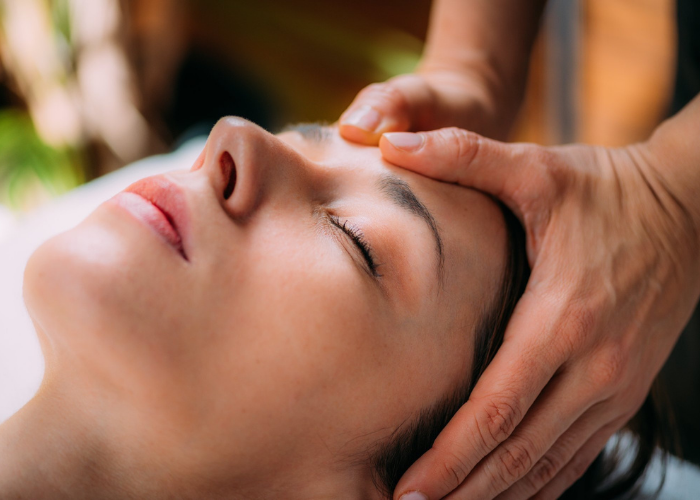
How can I find a qualified craniosacral therapist?
To find a qualified craniosacral therapist, seek recommendations from healthcare providers or professional organizations. Verify their credentials, experience, and any reviews. Consultation sessions can help ensure a good fit between practitioner and patient.
An adequate craniosacral therapist will be certified through a good educational institute and have experience in the chosen area. The Upledger Institute has resources to find a certified craniosacral therapist. It is advisable to get references from healthcare professionals or people whom you trust very much and who have had good results from the modality.
It may even help to interview them about their approach and experience with a given condition. You may want to have an initial appointment to test their philosophy to determine if it feels right and if it is right for you.
Can craniosacral therapy be used alongside conventional medicine?
Craniosacral therapy can complement conventional medical treatments but shouldn’t replace them. It may enhance overall well-being when used in conjunction with traditional healthcare, particularly for managing chronic pain or stress-related conditions.
It can be integrated with traditional treatment modalities to create a comprehensive healthcare program. It is administered as a complementary therapy, primarily in the rehabilitative aspects of chronic pains, anxiety, and stress, through the physical body’s release. Many a time, patients feel their quality of life improves and the stress in the patient reduces when craniosacral therapy is combined with medical care.
However, one must establish a line of communication with all care providers in order that other prescribed modalities do not conflict, and to provide good, coordinated care. Therapeutic outcomes are often maximized by collaboration with practitioners in a given area; in turn, this meets the physical and emotional health needs of the client.
Wrapping Up!
It is important to approach CST with an open and critical mind if you are considering trying it. Particularly, discuss potential benefits and risks with your healthcare provider if there are any pre-existing medical conditions. Always remember that CST can be a complementary therapy which may help some people but should not replace traditional medicine. Like any other treatment, what works for one person might not work for another.
Carnial Sacral Therapy
Cranial Sacral Therapy (CST), is a subtle but effective bodywork that has gained popularity in recent times.

Cranial Sacral Therapy isa gentle and non-invasive healing modality meant to improve the activities of the central nervous system. It works with the craniosacral system which includes the brain and spinal cord surrounding fluids and membrane. The practitioners use gentle touch to remove restrictions in these areas.
What’s The Basis OF The Craniosacral System?
The craniosacral system is based on the rhythmic pulsation of cerebrospinal fluid within the skull and spine. This system influences the central nervous system and overall bodily health through gentle manipulation.
Cranial sacral therapy cannot be fully comprehended unless the craniosacral system is understood. It comprises the Meninges, three covers that surround the spinal cord and brain.
Cerebrospinal fluid is a clear, colorless liquid that circulates around the brain and spinal cord. It protects and removes waste products. Skull, spine, pelvis bones are where our central nervous systems are located and protected.
Maintenance of an appropriate environment for optimal functioning of CNS depends on a healthy craniosacral system. It controls IntraCranial Pressure (ICP), shields the brain and spinal cord from physical trauma, and helps the flow of cerebrospinal fluid to flow.
What’s The Process of Cranial Sacral Therapy?
Cranial sacral therapy involves gentle, non-invasive touch to the skull, spine, and sacrum. The therapist assesses and adjusts the craniosacral rhythm to release tension, enhance fluid flow, and promote healing.
The practitioner starts by taking a comprehensive medical history and discussing the client’s immediate problems. Usually, the client lies down on a massage table fully clothed, facing up.
Practitioners use light, non-invasive gentle touches to examine craniosacral rhythms and locate regions where there is constriction or tightness. Normally no more than 5 grams of force are employed during this method.
It involves subtle manipulations that can help release restrictions within the craniosacral system. This may include mobilizing bones such as those found in the skull, spine, or pelvis and working with soft tissues such as fascia, among others.
Further discussions may be held after every therapeutic session regarding findings and recommendations for future care or changes in lifestyle.
What Are The Merits of Craniosacral Therapy?

Craniosacral therapy can relieve stress, reduce pain, improve circulation, enhance nervous system function, and support overall well-being. It is gentle, non-invasive, and may aid in healing various physical and emotional issues.
Cranial sacral therapy can solve a wide range of physical and emotional problems. Several patients suffering from chronic pain disorders such as migraines, neck and back pains, or temporomandibular joint (TMJ) disorders have embraced cranial sacral therapy.
It is believed that its gentle nature induces calmness, which may lead to a reduction in stress levels and anxiety. Cranial sacral therapy can help improve sleep quality by promoting relaxation and addressing nervous system imbalances.
Cranial sacral therapists are of the opinion that the immune system can be strengthened by optimizing the central nervous system. People suffering from disorders like autism, attention deficit hyperactivity disorder (ADHD), and post-concussion syndrome may benefit from this treatment.
After undergoing cranial sacral therapy sessions, many patients admit to experiencing positive changes in their moods and emotional balance. Pregnant women might find cranial sacral helpful during discomfort or for general well-being after birth.
Are There Scientific Evidence and Controversies?
Scientific evidence for craniosacral therapy is limited and mixed, with some studies showing benefits while others find minimal or no effects. Controversies exist regarding its efficacy and the lack of robust, conclusive research.
Several people claim to have positive experiences from this therapy however, it is crucial to highlight that the scientific evidence supporting its effectiveness is mixed. In some instances, research findings have indicated encouraging outcomes for specific conditions.
The debate as to whether cranial sacral therapy uses craniosacral rhythm or not is one of the main debates in this field. A few researchers contend that what practitioners feel as slight movements are actually traces of other physiological processes like breathing or cardiovascular rhythms.
Despite these controversies, many healthcare professionals still use cranial sacral therapy because they attest to its positive clinical results and patient satisfaction. Just like any complementary therapy, individuals should approach Cranial Sacral Therapy with an open mind and maintain realistic expectations.
What Are The Safety Considerations in Cranial Sacral Therapy?
Craniosacral therapy is generally safe, but it should be avoided or approached with caution in cases of severe head trauma, recent surgeries, or certain medical conditions. Always consult a healthcare professional beforehand.
When a qualified practitioner carries out cranial sacral therapy, it is generally considered safe for most patients on receipt of the same. However, there are some situations where caution is advised:
In cases of acute trauma, it’s important to seek medical attention before considering cranial sacral therapy. People with diseases that increase intracranial pressure, such as brain tumors or acute aneurysms, should ask their healthcare provider about cranial sacral therapy before trying it.
There are times when deep relaxation produced by this therapy may bring up emotional issues. Practitioners must be aware of this possibility and provide appropriate support.
How To Choose a Good Practitioner?
To choose a good craniosacral therapist, look for certified practitioners with relevant experience, positive reviews, and good communication skills. Ensure they are licensed and consult your healthcare provider for recommendations.
When selecting a cranial sacral therapy practitioner, it is important to choose someone who is competent. The practitioner must have proper training and certification offered by recognized organizations such as the Upledger Institute or the Biodynamic Craniosacral Therapy Association.
They must have experience in treating different health conditions or concerns. The practitioner should be ready to openly communicate about the therapy and work together with other medical care providers.
The therapist must have a relaxed and professional bearing that can make one feel at ease during the session.
Is Cranial Sacral Therapy like Reiki?
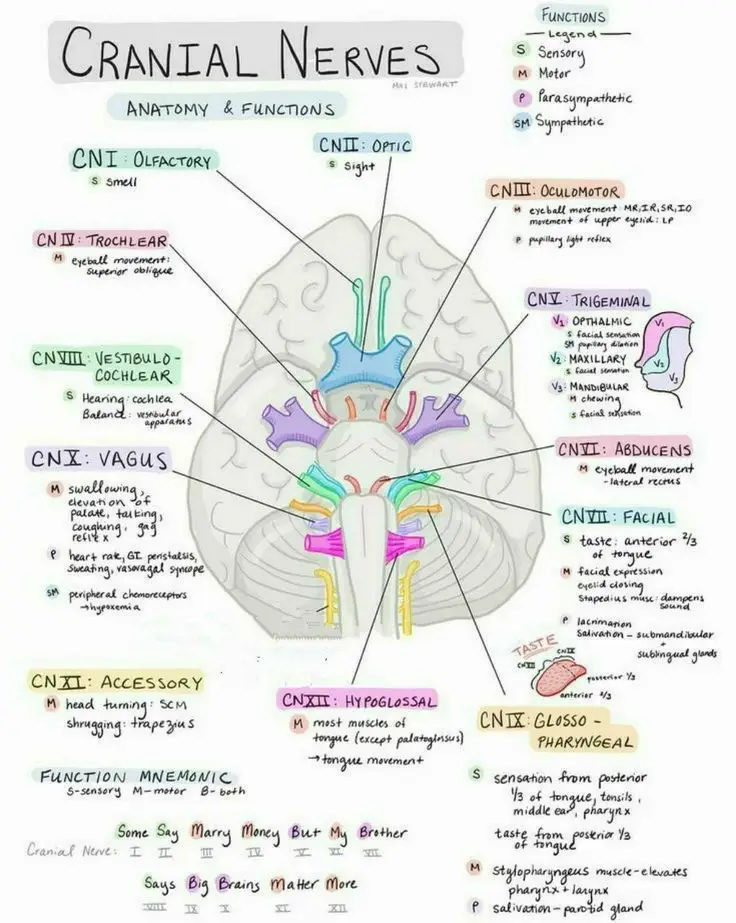
Craniosacral therapy and Reiki are different practices. Craniosacral therapy focuses on physical manipulation of the craniosacral system, while Reiki involves energy healing through non-touch techniques to balance the body’s energy.
Cranial sacral therapy (CST) and Reiki both aim at healing but are differently related. CST is a type of bodywork that uses light manipulation of the skull, spine and pelvis to release stress and improve cerebrospinal fluid flow. It mainly concerns anatomy and physical corrections.
However, Reiki involves energy healers who channel universal life energy for balance restoration purposes. While CST tends to focus more on physical factors, reiki concentrates much on energetic aspects.
What are the side effects of cranial sacral massage?
Side effects of craniosacral therapy may include mild dizziness, headaches, or temporary fatigue. These effects are usually brief and resolve quickly. If symptoms persist, consult with your therapist or healthcare provider.
Cranial sacral therapy (CST) is typically regarded as safe and gentle and has only a few side effects. A few people may feel discomfort for a short period or develop minor effects such as headaches, dizziness, fatigue, and emotional release during recuperation. These symptoms should not last long and are normal body responses to healing processes.
In some cases, however, there may be more serious reactions like intense pain or fainting, particularly if an individual has certain health problems. Therefore, it is advisable to consult with a licensed practitioner.
Conclusion
Cranial sacral therapy involves gentle non-invasive touches aimed at promoting good health by enhancing the efficiency of the craniosacral system. Despite some conflicting scientific evidence many people have claimed to benefit from this mode of treatment. Nevertheless, like any other alternative therapy, individuals must approach cranial sacral therapy with realistic outlooks.
